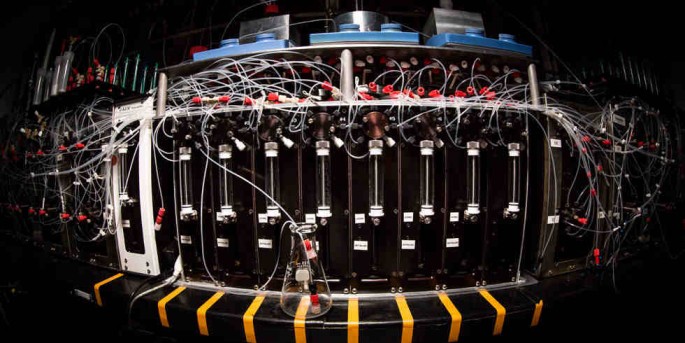Through the use of 3D printing technology, 12-week-old conjoined twins hailing from China's Jiangxi Province were successfully separated on Tuesday at a Shanghai hospital.
The girls were connected by a soft tissue at the hips, according to medical checks. Sharing a 10-centimeter anal tube, the girls have a combined weight of 9.55 kilos and have separate digestive systems.
The twins' surgery, which lasted up to five hours, commenced at 10 in the morning.
According to pediatric surgery expert Zheng Shan, the operation covered body separation, anus rebuilding and other nerve system repairs. Zheng is the vice president of Children's Hospital of Fudan University and was the head doctor of the surgery.
The operation was run by a total of 10 doctors from the general surgery, plastic and neurosurgery departments.
The hospital was the pioneering medical institution in the use of 3D printing technology in such surgery. For the twins' separation, the hospital sent their MRI and CT data to a 3D printing firm so that it can rebuild the conjoined body parts' anatomical structure.
"With the 3-D model, we could better understand the actual anatomical structure of the twin girls' conjoined parts. And it helped us to decide on a more precise starting point on the body," Zheng remarked.
Zheng also emphasized that the genital and the perineal parts of the girls are complete and fully established.
The girls were discovered to be conjoined after their delivery at a hospital in Ganzhou, Jiangxi Province, on March 17. During prenatal checkups, results showed that they were only twins.
Meanwhile, the Fudan University's children's hospital is considered as an expert in doing conjoined babies' separation. The hospital has successfully handled separations of four symmetrical conjoined twins and two asymmetric twins.
Doctors said that for such surgery, the twins should be ideally three months old and have a combined weight of 10 kilograms.
For the recently separated twins, experts stated that it might take three more days for them to get out of danger.
Zheng remarked that the hospital has given "special attention to some possible complications, such as cerebrospinal fluid leak, which may lead to purulent meningitis and produce life risk."
The case of the girls from Jiangxi, wherein they were linked at the hips, is very rare--only about 18 percent of the conjoined twins populace. The rest are connected mostly at the chest and abdomen.
A charity organization gave 200,000 yuan to assist in the procedure.



























